Are you worried about the increasing stress and distractions your children face in today’s fast-paced world? Introducing mindfulness to your kids can be the key to cultivating inner peace and well-being.
In a world filled with distractions and constant stimulation, it’s crucial to equip our kids with the tools to cultivate inner peace and well-being. By teaching them the practice of paying attention to the present moment with kindness and curiosity, you can empower them with lifelong skills to navigate life’s challenges.
Mindfulness enables children to manage their emotions, reduce anxiety, improve focus, and develop empathy. Let’s embark on this transformative journey together, nurturing your child’s inner world and equipping them with the tools they need to thrive in a hectic world.
Table of contents
Introduction
Mindfulness is the practice of being fully present and aware of one’s thoughts, feelings, and surroundings without judgment.
For children, introducing mindfulness can be a transformative practice as it offers numerous benefits.
Firstly, mindfulness helps children develop better self-regulation skills, enabling them to manage their emotions and impulses effectively. It reduces stress and anxiety, promoting a sense of calm and well-being.
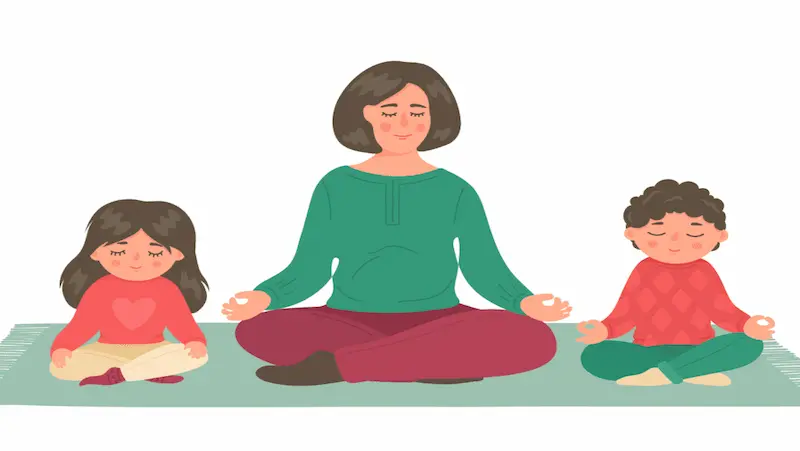
By cultivating mindfulness, children improve their attention span, concentration, and focus, leading to enhanced academic performance. It also encourages empathy and compassion, fostering better relationships and social skills.
Overall, by encouraging them to cultivate regular mindfulness practice, we provide them with a lifelong skill to navigate life’s challenges with resilience that will support their mental and emotional well-being.
Investing in mindfulness for kids is an investment in their future happiness and success. Let’s empower our children to find inner peace amidst the chaos and help them navigate life’s ups and downs with grace and resilience.
Importance of Mindfulness for Kids
Mindfulness is crucial for children’s well-being due to several compelling reasons:
1. Emotional Regulation: Mindfulness equips children with the tools to recognize and manage their emotions effectively. By practicing mindfulness, they learn to observe their thoughts and feelings without judgment, allowing them to respond rather than react impulsively. This cultivates emotional resilience and stability.
2. Stress Reduction: Children today face increasing levels of stress, whether from academic pressures, social challenges, or technological distractions. Mindfulness provides a refuge from this stress by teaching children to focus on the present moment. It helps them develop a sense of calm and relaxation, reducing anxiety and promoting overall well-being.
3. Improved Concentration and Focus: Mindfulness exercises strengthen children’s attention span and concentration abilities. By training their minds to stay present and focused, they become better equipped to engage in tasks, absorb information, and perform academically.
4. Enhanced Self-Awareness: Mindfulness encourages children to develop a deeper understanding of themselves. They learn to recognize their thoughts, emotions, and physical sensations, fostering self-awareness and self-acceptance. This self-knowledge enables them to make choices aligned with their values and needs.
5. Empathy and Compassion: Mindfulness nurtures empathy and compassion in children. By paying attention to their own experiences and emotions, they develop a greater understanding and empathy for others. This leads to improved social interactions, conflict resolution skills, and the ability to cultivate meaningful relationships.
6. Resilience and Coping Skills: Mindfulness teaches children that difficult emotions and challenges are temporary and manageable. By cultivating a non-judgmental attitude, they develop resilience and effective coping mechanisms when faced with adversity.
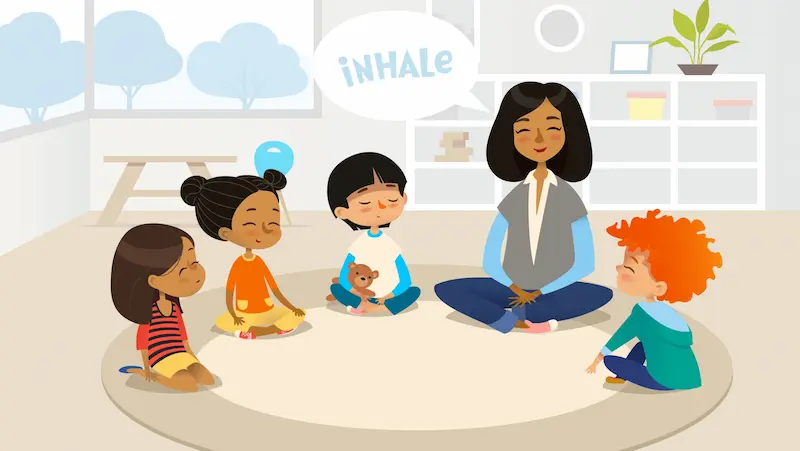
Overall, mindfulness empowers children to navigate life with greater self-awareness, emotional regulation, and compassion, promoting their overall well-being and long-term happiness.
How to Introduce Mindfulness to Children
Introducing mindfulness to kids can be an exciting and transformative journey. Here are some practical tips and strategies to help you get started:
1. Set an Example: Children learn by observing, so be a mindful role model. Practice mindfulness yourself and let your children see you engaging in mindful activities such as deep breathing or taking mindful walks.
2. Keep it Simple: Start with short and age-appropriate mindfulness exercises. Use simple language and explanations that children can understand easily. Encourage them to focus on their breath, and body sensations, or engage in guided visualizations.
3. Make it Fun: Incorporate playful elements into mindfulness activities. Use games, props, or visual aids to make it enjoyable for kids. For example, you can use a “mindfulness jar” filled with glitter to represent thoughts settling down.
4. Practice Regularly: Set aside dedicated time for mindfulness practice. It can be a few minutes each day or a specific time during the week. Consistency is key to establishing the habit and reaping the benefits of mindfulness.
5. Engage the Senses: Encourage children to engage their senses in mindfulness. Guide them to notice the sights, sounds, smells, tastes, and textures around them. This helps anchor their attention to the present moment.
6. Mindful Breathing: Teach children simple breathing exercises. For example, they can take slow, deep breaths in through the nose and out through the mouth, focusing on the sensations of the breath entering and leaving their bodies.
7. Mindful Movement: Incorporate mindful movement into their routine. Encourage activities like yoga, stretching, or walking mindfully. Help them pay attention to how their bodies feel during the movements.
Introducing mindfulness breathing for kids at an early age can promote emotional well-being and focus.
8. Gratitude Practice: Cultivate gratitude by encouraging children to reflect on things they are thankful for. This can be done through journaling, drawing, or sharing gratitude at mealtime or bedtime.
9. Mindful Eating: Encourage children to eat mindfully by savoring each bite, noticing flavors and textures, and being fully present during meals. Teach them to eat slowly and pay attention to their hunger and fullness cues.
10. Practice Patience: Mindfulness takes time to develop, so be patient with your child’s progress. Encourage them gently and celebrate their efforts rather than focusing solely on results.
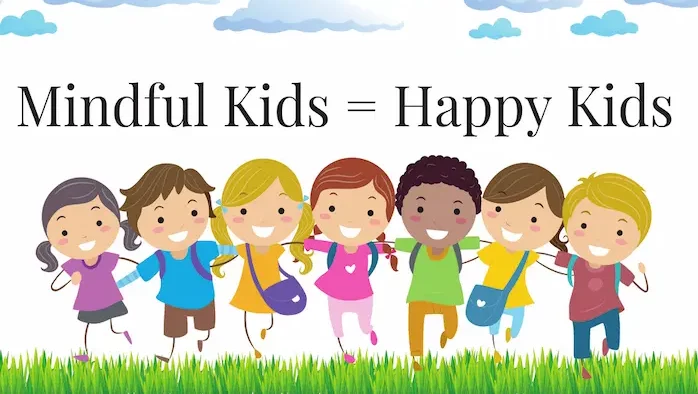
Remember, introducing mindfulness to children should be a positive and enjoyable experience. Adapt the strategies to suit your child’s age, interests, and personality. With consistency and patience, mindfulness can become a valuable lifelong skill for your children’s well-being.
Mindfulness Activities for Kids
Here are some age-appropriate mindfulness exercises, games, and activities for children:
1. Mindful Breathing: Teach children to take deep breaths and focus on their breath. They can place a stuffed animal on their belly and watch it rise and fall as they breathe in and out slowly.
2. Five Senses Exploration: Guide children to use their five senses to explore their environment. Ask them to identify five things they can see, four things they can touch, three things they can hear, two things they can smell, and one thing they can taste.
3. Mindful Walk: Take children on a mindful walk outdoors. Encourage them to notice the sounds of nature, the feeling of the ground beneath their feet, and the sights around them. Encourage them to walk slowly and mindfully.
Mindfulness exercises for kids can help them develop a greater sense of focus and concentration.
4. Mindful Listening: Play a game of “sound scavenger hunt.” Ask children to close their eyes and listen carefully, trying to identify different sounds around them. They can share what they heard afterward.
5. Mindful Eating: Encourage children to eat a small snack mindfully. Ask them to observe the colors, textures, and smells of the food. Encourage them to take small bites and savor each one, paying attention to the taste and how it feels in their mouths.
6. Guided Visualization: Use guided imagery to take children on a relaxing journey. For example, guide them through a calming visualization of floating on a cloud or walking through a peaceful garden.
7. Mindful Drawing: Provide children with paper and crayons. Ask them to draw whatever comes to mind, encouraging them to focus on the lines they create and the colors they choose. Emphasize the process rather than the end result.
8. Mindful Emotions: Help children identify and understand their emotions. Provide them with a chart or wheel of emotions and ask them to check in with how they’re feeling at different times of the day. Encourage open discussions about emotions.
9. Mindful Body Scan: Guide children through a body scan exercise where they pay attention to each part of their body, starting from their toes and moving upward. They can notice any sensations or tension and try to relax those areas.
10. Gratitude Jar: Create a gratitude jar with children. Have them write or draw something they are grateful for on small slips of paper and place them in the jar. Encourage them to add to the jar regularly and read the slips of gratitude together.
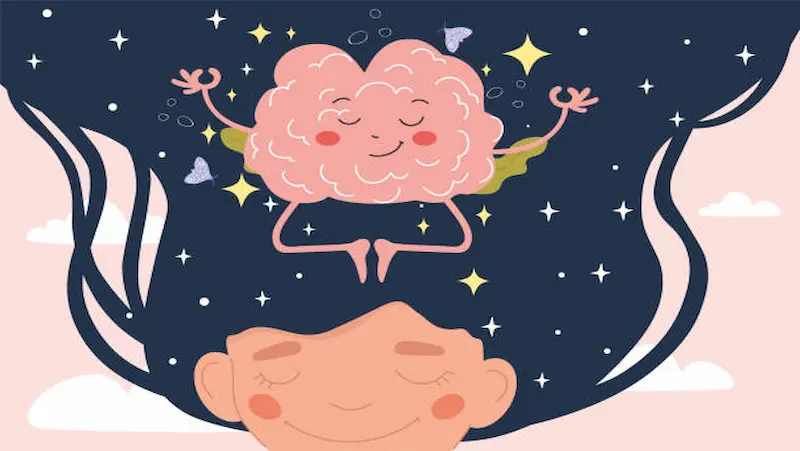
Remember to adapt these exercises based on the child’s age and developmental level. Make them interactive, engaging, and enjoyable to keep the child’s interest and make mindfulness a positive experience for them.
Benefits of Mindfulness for Children
Mindfulness offers numerous positive impacts on children’s mental health, focus, emotional intelligence, and stress reduction. Let’s explore each area:
1. Mental Health: Mindfulness practices have been shown to reduce symptoms of anxiety and depression in children. By teaching children to observe their thoughts and emotions without judgment, mindfulness helps them develop a more positive and balanced mindset. It promotes self-acceptance, resilience, and a greater sense of well-being.
2. Focus and Attention: Mindfulness exercises improve children’s ability to focus and sustain attention. By training their minds to stay present in the moment, they become less distracted by external stimuli. This increased focus positively impacts their academic performance and enhances their learning abilities.
3. Emotional Intelligence: Mindfulness cultivates emotional intelligence in children by encouraging them to become aware of and regulate their emotions. It helps them develop a better understanding of their own feelings and the feelings of others. By fostering empathy and compassion, mindfulness improves their social interactions and relationships.
4. Stress Reduction: Mindfulness is a powerful tool for stress reduction in children. By teaching them to be fully present and engage in the present moment, mindfulness helps children manage stress and anxiety. It provides them with coping mechanisms to navigate challenging situations and promotes a sense of calm and relaxation.
Engaging in arts and crafts can be an effective emotional regulation activity for kids, as it allows them to express themselves creatively.
5. Self-Regulation: Mindfulness empowers children with self-regulation skills, allowing them to respond rather than react impulsively to challenging situations. By developing the ability to pause and make conscious choices, children become more in control of their behavior and emotions.
6. Resilience: Mindfulness practices foster resilience in children by teaching them to accept and navigate difficulties with equanimity. It encourages a growth mindset, helping them view setbacks as opportunities for learning and personal growth. Mindfulness equips children with the tools to bounce back from adversity and face challenges with resilience.
Overall, mindfulness has a profound positive impact on children’s mental health, focus, emotional intelligence, and stress reduction. It promotes their overall well-being and equips them with essential life skills that will serve them throughout their lives.
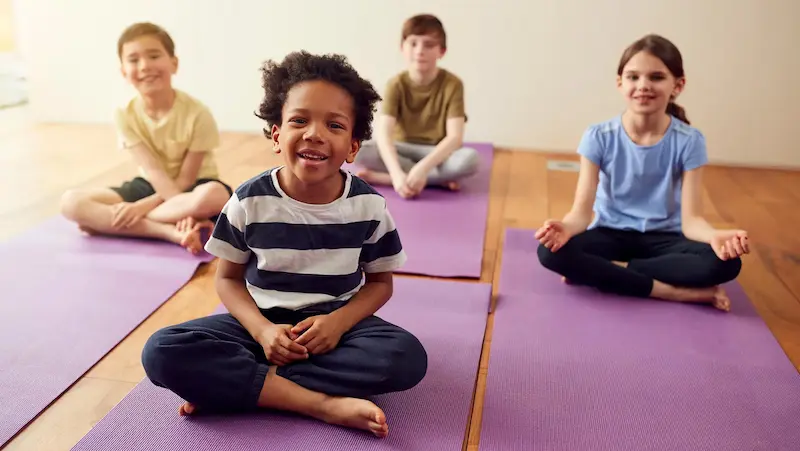
Mindful Parenting: Practicing Mindfulness with Your Kids
Incorporating mindfulness into your own life and practicing it with your children can have a profound impact on your family’s well-being. Here are some guidelines and tips to help you get started:
1. Set an Intention: Make a commitment to prioritize mindfulness in your daily life. Recognize the benefits it can bring to your well-being and that of your children. Set an intention to practice mindfulness regularly and be a role model for your children.
2. Start Small: Begin with short mindfulness practices that are manageable for you and your children. It can be as little as a few minutes each day. Gradually increase the duration as you and your children become more comfortable with the practice.
Using gentle parenting techniques, parents aim to build a strong and nurturing connection with their children.
3. Create Mindful Rituals: Incorporate mindfulness into daily routines. For example, you can practice mindful breathing together before meals, engage in a short gratitude practice at bedtime, or take a mindful walk as a family on weekends. These rituals anchor mindfulness into your daily life.
4. Practice Mindful Listening: When your children talk to you, practice active and mindful listening. Give them your full attention, maintain eye contact, and listen without judgment or interruption. This shows them the importance of being present and fosters deep connections.
5. Join Mindfulness Programs or Workshops: Consider participating in mindfulness programs or workshops designed for families. This can provide structured guidance and support for both you and your children. Look for local community centers, schools, or online resources that offer family-oriented mindfulness activities.
6. Explore Mindfulness Apps and Resources: There are numerous mindfulness apps and resources available that offer guided meditations, breathing exercises, and mindfulness activities for children and adults. Utilize these tools as a family to enhance your mindfulness practice.
7. Incorporate Mindful Language: Integrate mindful language into your interactions with your children. Encourage them to express their feelings and thoughts openly, promoting a non-judgmental and compassionate environment. Use words that foster self-awareness and understanding.
8. Practice Gratitude Together: Engage in gratitude practices as a family. Share what you are grateful for during mealtimes or create a gratitude jar where everyone can contribute notes of gratitude. This cultivates a positive mindset and appreciation for the present moment.
9. Be Patient and Flexible: Remember that mindfulness is a skill that develops over time. Be patient with yourself and your children as you navigate the practice. Adapt the exercises and activities to suit your family’s needs and interests.
10. Make It Fun: Infuse playfulness into your mindfulness practice. Use games, storytelling, or creative activities to make it engaging for your children. This helps them associate mindfulness with positive experiences and builds their enthusiasm for the practice.

By incorporating mindfulness into your own life and practicing it with your children, you create a supportive and mindful environment that benefits the whole family. Remember that consistency, patience, and a sense of curiosity will help you and your children embark on this journey of well-being together.
Recommended Resources and Tools
Here are some recommended books, apps, websites, and other resources related to mindfulness for kids:
Books:
1. “Sitting Still Like a Frog: Mindfulness Exercises for Kids (and Their Parents)” by Eline Snel
2. “A Handful of Quiet: Happiness in Four Pebbles” by Thich Nhat Hanh
3. “Moody Cow Meditates” by Kerry Lee MacLean
4. “Breathe Like a Bear: 30 Mindful Moments for Kids to Feel Calm and Focused Anytime, Anywhere” by Kira Willey
5. “Visiting Feelings” by Lauren Rubenstein
Many parents seek guidance from parenting books to improve communication and build stronger connections with their kids.
Apps:
1. Headspace for Kids: Offers guided meditations, mindfulness exercises, and animations designed specifically for kids.
2. Calm Kids: Provides guided meditations, sleep stories, and breathing exercises for children.
3. Smiling Mind: Offers mindfulness programs tailored for different age groups, from kids to teens, promoting calmness and well-being.
4. Stop, Breathe & Think Kids: Provides a range of guided meditations and activities for children to develop mindfulness skills.
5. Super Stretch Yoga: Combines yoga poses, breathing exercises, and mindfulness activities to promote relaxation and focus for children.
BrightChamps offers some of the best coding apps for kids, designed to develop their coding skills and facilitate engaging learning experiences.
Websites and Online Resources:
1. Mindful Schools: Offers courses, resources, and training for educators and parents to teach mindfulness to children.
2. Mindful.org: Provides articles, practices, and resources on mindfulness for all ages, including children.
3. GoZen!: Offers programs and resources for children’s anxiety, incorporating mindfulness and cognitive-behavioral techniques.
4. Mindfulness Exercises: Provides a collection of free mindfulness exercises and activities for children and adults.
5. Mindful Kids: Offers books, cards, and activities to help children develop mindfulness and self-regulation skills.
These resources can serve as valuable tools to support your mindfulness journey with your children. Remember to explore and find what resonates best with your family’s needs and preferences.

Conclusion
In conclusion, introducing mindfulness to children is a powerful gift that nurtures their mental and emotional well-being. By cultivating mindfulness, children develop skills in self-regulation, focus, emotional intelligence, and stress reduction.
It empowers them to navigate life’s challenges with resilience and compassion. As parents, incorporating mindfulness into our own lives and practicing it with our children creates a harmonious and mindful environment.
Through books, apps, websites, and other resources, we can find valuable guidance and support on this transformative journey. By embracing mindfulness together, we lay a foundation for our children’s lifelong well-being, equipping them with essential tools to thrive in a fast-paced and ever-changing world.
Teaching money management for kids is essential to lay a strong foundation for their financial future.
BrightChamps helps kids develop skills in self-regulation and focus through our engaging educational programs. Additionally, we inspire entrepreneurial spirit by teaching creative ways for kids to make money, fostering independence and financial responsibility. Join us to empower your child with essential life skills for a successful future!
To get your hands on more such educational and free resources on coding, robotics, game development, etc., do check out the Brightchamps Blog Page now!
Frequently Asked Questions
Mindfulness is present-moment awareness without judgment. It is important for kids as it enhances focus, emotional regulation, resilience, and overall well-being, fostering a positive and balanced mindset.
Introduce mindfulness to your child by setting an example, starting with short exercises, making it fun, and incorporating mindful activities into daily routines, such as breathing exercises and guided visualizations.
Yes, there are age-appropriate mindfulness activities for kids. Examples include mindful breathing, sensory explorations, mindful walks, guided visualizations, gratitude practices, and mindful drawing or coloring.
The benefits of mindfulness for children’s mental health include reduced anxiety and depression symptoms, improved focus and attention, enhanced emotional regulation, increased resilience, and overall well-being.
Parents can practice mindfulness with their kids by setting aside dedicated time for mindfulness exercises, engaging in mindful activities together, practicing active listening, and incorporating mindfulness into daily routines and interactions.
Recommended books and resources on mindfulness for kids include “Sitting Still Like a Frog” by Eline Snel, mindfulness apps like Headspace for Kids, and websites such as Mindful Schools and Mindful.org.
Mindfulness helps improve focus and concentration in children by training their attention to stay in the present moment, reducing distractions, and increasing their ability to sustain focus on a chosen task or activity.
Yes, mindfulness techniques can help reduce stress and anxiety in kids. By teaching them to observe their thoughts and emotions without judgment, mindfulness promotes relaxation, resilience, and a sense of calm.
Mindfulness supports emotional intelligence in children by helping them develop self-awareness, emotional regulation, empathy, and compassion. It enhances their ability to understand and manage their own emotions and relate to others with empathy.
Yes, there are mindfulness apps and tools suitable for kids, such as Headspace for Kids, Calm Kids, Smiling Mind, Stop, Breathe & Think Kids and Super Stretch Yoga.


 We are an army of educators and passionate learners from BrightChamps family, committed to providing free learning resources to kids, parents & students.
We are an army of educators and passionate learners from BrightChamps family, committed to providing free learning resources to kids, parents & students.







